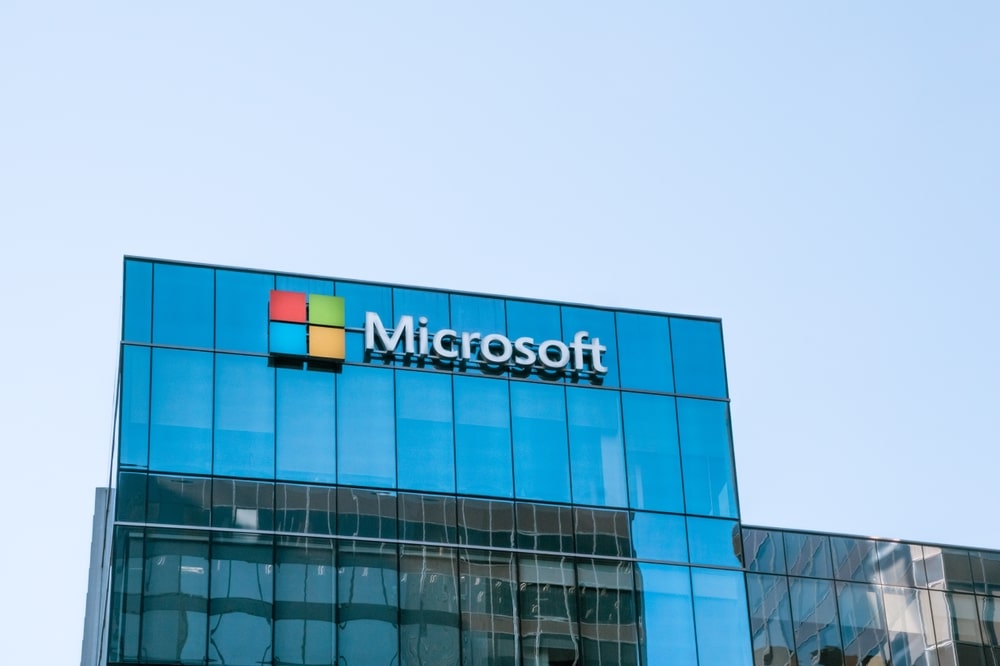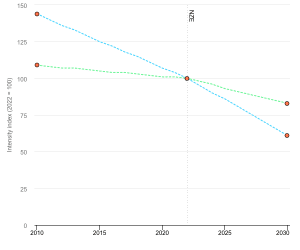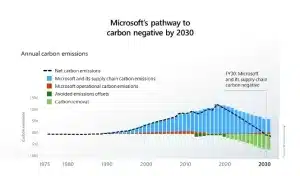In a recent announcement, CO280 and Aker Carbon Capture are partnering with Microsoft to supply considerable amounts of cost-effective and high-quality Carbon Dioxide Removals (CDRs) to the market. This brand-new collaboration aims to expand the entire carbon removal value chain by capturing and permanently storing biogenic CO2 at pulp and paper mills.
Aker Carbon Capture, previously a division of Aker Solutions, carries all the 20 years of Aker Solutions’ CCUS experience, experts, technology and project references.
Microsoft-Aker Carbon Capture- CO280 Partnership: Leveraging Expertise for Efficient Carbon Removal
The three companies have signed a Memorandum of Understanding (MoU) to investigate possibilities for boosting the “physical and digital value chain of carbon removal” in the US and Canada.
The trio will powerfully leverage their cutting-edge technologies, robust knowledge, and ample resources to accelerate the transition to global net zero.
Furthermore, they plan to ramp up the market by creating scalable models to implement large-scale carbon removal projects.
Notably, the main aim of the partnership is to utilize the advantages of each to uplift the carbon ecosystem. The joint effort would inevitably boost high-quality carbon credits in the voluntary carbon market.
The tri-party has signed a MoU agreement that defines the significant elements related to the development and execution of carbon projects.
Supporting this landmark move, Egil Fagerland, CEO of Aker Carbon Capture, said,
“It’s time to move past the first-of-a-kind and the demonstration projects for carbon removal. The deployment rate needs to be accelerated by the hundreds to deliver the ‘net’ in net zero. We have demonstrated the strength of working together in the past, and we are excited to expand our collaboration with Microsoft and CO280 to further deliver impact.”
Unlocking the Key Areas of the Partnership as per the MoU
Aker Carbon Capture has rolled out the tri-party MoU that has highlighted the following areas they would be working on:
1. Exploring Biogenic Projects
Developing biogenic carbon capture projects, including projects currently in CO280’s development pipeline, as well as additional projects. Biogenic carbon projects include the C02 which is absorbed, stored, and emitted by organic matter like soil and trees. Hence, the pulp and paper industry is given priority.
2. Leveraging Joint Efforts of CO280 and ACC
CO280 will apply its expertise to develop a standard and efficient screening process for evaluating the technical and economic feasibility of carbon capture in pulp and paper mills. Subsequently, they will deploy Aker Carbon Capture’s hallmark “Just Catch” series.
Just Catch modular solutions facilitate rapid and large-scale deployment of capture technology. According to media reports, ACC currently delivers seven carbon capture units: five Just Catch 100 units to Ørsted, one Just Catch 100 unit to Twence and a Big Catch delivery to Heidelberg Materials at Brevik.
3. Utilizing Microsoft’s Premium Technology and Digital Solutions
Darryl Willis, Corporate Vice President of Energy and Resources Industry at Microsoft, noted,
“By leveraging the power of technology to create a digital value chain for carbon tracking and reporting, we can equip the market for high-integrity carbon removal credits and further enable the industrial sector to decarbonize.”
The collaboration aims to standardize lifecycle assessment (LCA) and measurement, verification, and reporting (MRV) systems for capture projects in pulp and paper.
It ambitiously seeks to leverage Microsoft’s digital capabilities, cloud computing platforms, services, and solutions. The MoU also defines creating a digital tool to compare CO280’s planned projects against Microsoft’s Criteria for High-Quality Carbon Removal.
4. Driving the Change through Leadership
Microsoft, the tech giant, along with ACC and CO280, the pioneers of carbon capture, have immense potential to kickstart this massive project.
The initiative promotes policies and displays bold leadership to boost the carbon capture market in the pulp and paper industry. This would automatically help create and utilize high-integrity carbon removal credits.
- MUST READ: Microsoft to Purchase 95,000 Biochar Carbon Removal Credits from The Next 150 • Carbon Credits
Harnessing North America’s Paper and Pulp Industry for CDR Projects
The pulp and paper industry in North America holds significant potential for carbon removal. It opens a window to remove up to 130 MT of CO2 annually. Furthermore, the paper and pulp industry has a unique emissions profile, where the average mill emits CO2 that is 80-90% biogenic in nature.
Biogenic CO2 emissions, originating from organic materials like wood, fiber, etc. offer a distinct advantage in carbon removal efforts.
By capturing and permanently storing these emissions, the industry can achieve negative emissions. This means that more CO2 is removed from the atmosphere than is being emitted during the production process.
This opportunity for negative emissions presents a pivotal pathway in combating climate change. Through advanced CCS technologies, the pulp and paper sector can play a crucial role in mitigating GHG emissions and contributing to global efforts to achieve net-zero carbon emissions.
Pulp and paper emissions intensity in the Net Zero Scenario, 2018-2030
NZE= Net Zero Emissions by 2050 Scenario.
source: International Energy Agency (IEA)
Partnership Commitments: A Call to Action for Net-Zero Transition
Microsoft’s Ambition
In 2020, Microsoft announced ambitious carbon goals: to become carbon negativity by 2030 and eliminate its carbon footprint by 2050. The journey began with minimizing carbon emissions, transitioning to carbon-free energy, and actively removing remaining emissions. Since then, the company has been dedicated to establishing a robust market for carbon dioxide removals. Being powered by a digital value chain, it can accurately track carbon and generate credits efficiently.
source: Microsoft
CO280’s CDR Initiatives
CO280, the Vancouver-based company is a top developer of CDR projects within the pulp and paper sector. Through strategic partnerships within this industry, CO280 leads the development, financing, ownership, and operation of large-scale CDR initiatives.
Currently, the company boasts a robust pipeline of projects, with more than 10 million tons per year of permanent CDR under development. These projects signify a step forward to carbon neutrality and bring a meaningful change within the pulp and paper industry.
Jonathan Rhone, Chief Executive Officer of CO280, said,
“This commitment on the part of three best-in-class companies is exactly the kind of bold move the industry needs to unlock the enormous removal opportunity in the pulp and paper industry and scale up the CDR market. Together, we are developing the largest scale, lowest cost, permanent carbon removal projects in the world.”
ACC’s Unique CC technology
On the other side, Aker Carbon Capture (ACC), the Norway-based company offers its blueprint carbon capture (CC) technology to reduce and remove CO2 emissions from industrial plants. Their solution uses a mixture of water and organic amine solvents to absorb CO2. It is useful for various sectors such as gas, coal, cement, refineries, bio- and waste-to-energy, and hydrogen. Notably, this technology would be immensely beneficial in decarbonizing the paper and pulp industry.
To keep a strong foothold in the decarbonization race, Microsoft believes in collaborating with like-minded companies. All considered, this partnership with Aker Carbon Capture and CO280 holds great significance in realizing their vision of a net-zero future.




